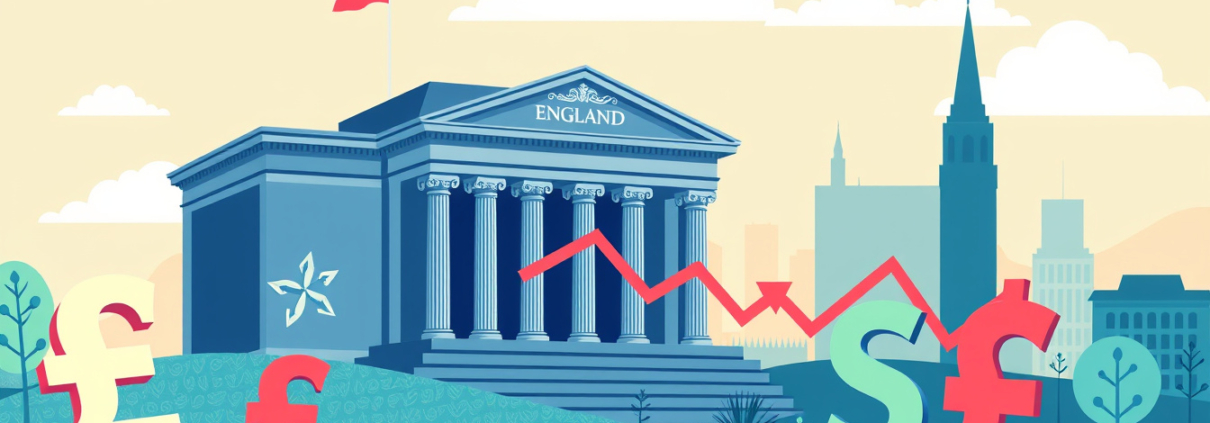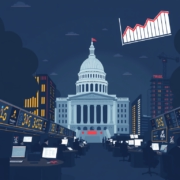UK Economy Stalls: BoE’s Rate-Cut Challenge and GBP/USD Response
UK Economy Loses Momentum, BoE Faces Tough Rate-Cut Dilemma; GBP/USD Dips
By Bob Mason | Updated: September 12, 2025, 06:20 GMT+00:00
Recent UK data shows growth slowing in July. The report forces the Bank of England to decide: keep high rates as inflation stays high, or ease policies amid weak growth. The GBP/USD pair fell a bit when the GDP figures were released.
UK GDP Growth Stalls in July
The UK economy slowed in July. In June, the economy grew by 0.4%, but in July the overall GDP stayed the same. The Office for National Statistics shows that the month ended with no growth.
Monthly, services output barely increased by 0.1% in July after a 0.3% gain in June. Production dropped by 0.9% in July after growing 0.7% in June. Manufacturing, a large part of production, fell by 1.3% in July after a 0.9% rise in June. These closer links between data points raise a worry about the UK’s economic strength.
Over the three months ending in July, GDP growth slowed to 0.2%, down from 0.3% for the three months ending in June. These changes show a broad slowdown.
Inflation Presents a Policy Puzzle for the Bank of England
The slowdown appears when inflation is still high. Headline inflation rose to 3.8% in July, up from 3.6% the month before. Core inflation also climbed. The inflation rate for services went up to 5% year-on-year in July from 4.7% in June. With services affecting the overall count more, this rise makes the inflation picture harder to read.
BoE Governor Andrew Bailey noted, “There is now considerably more doubt about exactly when and how quickly we can move those further steps.” His words show that the timing and speed of any change remain unclear.
The job market is steady, with unemployment at 4.7%, and wages continue to grow. Some economists say the Bank may cut rates only when inflation and wages slow down more clearly.
Upcoming Data Will Influence the Outlook
Key UK numbers are set for mid-September. Inflation figures will come on September 15, and labor market data will follow on September 17. If these reports show a clear drop in inflation and slower wage growth, market views of a November rate cut may gain strength.
GBP/USD Market Reaction
After the GDP data came out, the GBP/USD pair slipped. Before the report, the pair briefly rose to $1.35804, then dropped to a low of $1.35496. By September 12, it was about 0.15% lower at $1.35507. The BoE’s tough decision contrasts with views that the U.S. central bank may cut rates next week. This split in paths may push the GBP/USD pair below the $1.35 level if the BoE decides to cut rates.
Conclusion
The UK economy’s weak growth in July and rising inflation have put the Bank of England in a tight spot. Slow GDP would normally call for lower rates, but stubborn inflation in the services sector and a steady job market mean any cuts may wait until there is a clear sign of easing. Traders and investors now watch the upcoming inflation and labor data for clues about the Bank’s next move and the future path of the British pound.
About the Author
Bob Mason has over 28 years of experience in the financial industry, covering currencies, commodities, alternative assets, and global equities with a focus on European and Asian markets.
Stay updated on economic trends and market insights with FXEmpire.
Full money-growing playbook here:
youtube.com/@the_money_grower









